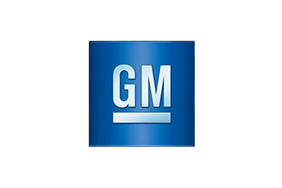GM Role in Coskata's Cellulosic Ethanol Has Deep Roots
Published 04-25-08
Submitted by General Motors
MADISON, PA - April 25, 2008 - General Motors Corp.'s role in helping Coskata Inc. bring its next-generation cellulosic ethanol to market traces back a quarter of a century to technology developed for a GM iron foundry in northwest Ohio.
Coskata announced Friday that its pilot plant will be located at the Westinghouse Plasma Center in Madison, the current site of a pilot-plant gasifier.
Gasification is the first step in Coskata's process to make ethanol out of practically any renewable source. Plasma torches are used to super heat source material, such as agricultural and municipal solid waste, to 1,600 degrees Fahrenheit, which creates a synthesis gas comprised of carbon dioxide and hydrogen.
The gas is cooled to about 100 degrees Fahrenheit and then is consumed by Coskata's patented microorganisms, which excrete ethanol and some water.
In 1983, the GM Central Foundry Division collaborated with Westinghouse Electric Corp., later known as Westinghouse Plasma Corp., and others to develop a high-volume plasma torch furnace, called a plasma arc cupola, that could more flexibly produce molten iron used to make automotive engine blocks, crankshafts and brake components.
GM's first application of plasma torch technology was in 1989 at its foundry in Defiance, Ohio, where it is still used today.
"Who knew this process would be used more than 20 years later to make cellulosic ethanol?" said Chris Desautels, Defiance Facilities Engineering Manager. "Coskata's process could dramatically change the biofuels landscape in the next five to 10 years and it has some of its roots right here in Defiance."
At its commercial scale plants, Coskata intends to use WPC Marc-11 plasma torches, which have been proven in metallurgical and waste-to-energy commercial applications throughout the world. The Marc-11 torches have more than 500,000 hours of operation in industrial settings, including the GM Defiance foundry.
A smaller version, the Marc-3, will be used in Coskata's Madison facility. A WPC Marc-3 has been used in Japan to gasify municipal solid waste for more than five years.
About General Motors Corp.
General Motors Corp. (NYSE: GM), the world's largest automaker, has been the annual global industry sales leader for 77 years. Founded in 1908, GM today employs about 266,000 people around the world. With global headquarters in Detroit, GM manufactures its cars and trucks in 35 countries. In 2007, nearly 9.37 million GM cars and trucks were sold globally under the following brands: Buick, Cadillac, Chevrolet, GMC, GM Daewoo, Holden, HUMMER, Opel, Pontiac, Saab, Saturn, Vauxhall and Wuling. GM's OnStar subsidiary is the industry leader in vehicle safety, security and information services. More information on GM can be found at www.gm.com.

General Motors
General Motors
General Motors Corp. (NYSE: GM), the world's largest automaker, has been the global industry sales leader for 75 years. Founded in 1908, GM today employs about 327,000 people around the world. With global headquarters in Detroit, GM manufactures its cars and trucks in 33 countries. In 2005, 9.17 million GM cars and trucks were sold globally under the following brands: Buick, Cadillac, Chevrolet, GMC, GM Daewoo, Holden, HUMMER, Opel, Pontiac, Saab, Saturn and Vauxhall.
More from General Motors

